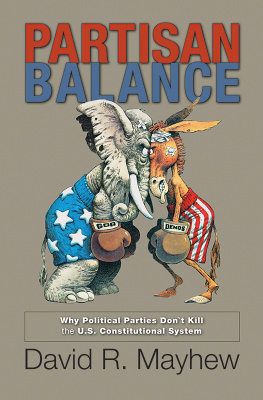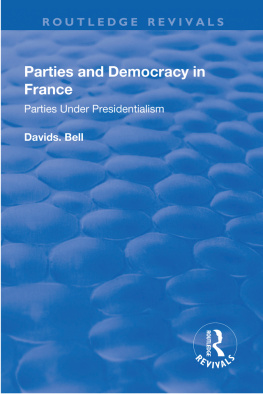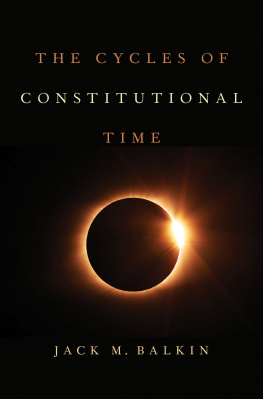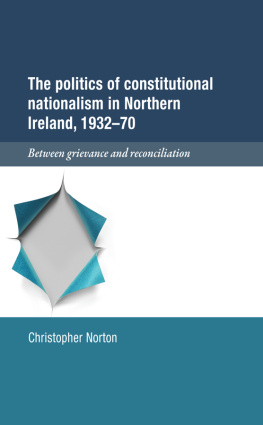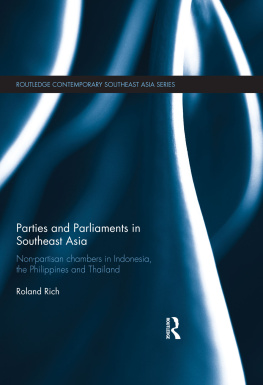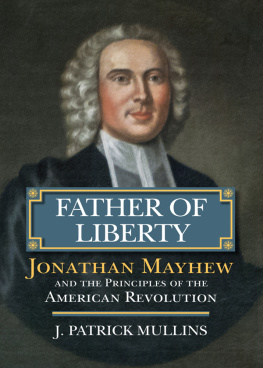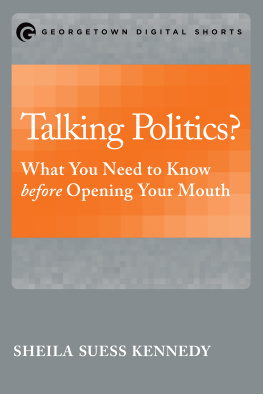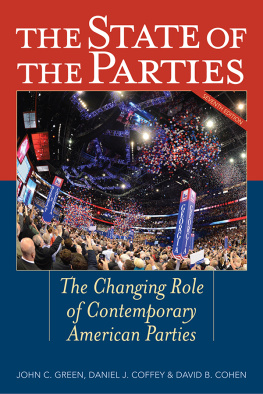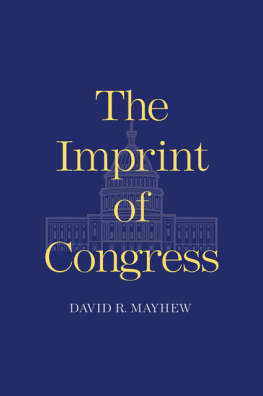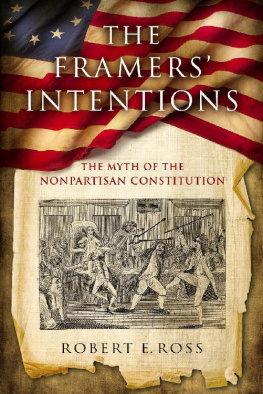David R. Mayhew - Partisan Balance: Why Political Parties Dont Kill the U.S. Constitutional System
Here you can read online David R. Mayhew - Partisan Balance: Why Political Parties Dont Kill the U.S. Constitutional System full text of the book (entire story) in english for free. Download pdf and epub, get meaning, cover and reviews about this ebook. year: 2011, publisher: Princeton University Press, genre: Politics. Description of the work, (preface) as well as reviews are available. Best literature library LitArk.com created for fans of good reading and offers a wide selection of genres:
Romance novel
Science fiction
Adventure
Detective
Science
History
Home and family
Prose
Art
Politics
Computer
Non-fiction
Religion
Business
Children
Humor
Choose a favorite category and find really read worthwhile books. Enjoy immersion in the world of imagination, feel the emotions of the characters or learn something new for yourself, make an fascinating discovery.
- Book:Partisan Balance: Why Political Parties Dont Kill the U.S. Constitutional System
- Author:
- Publisher:Princeton University Press
- Genre:
- Year:2011
- Rating:5 / 5
- Favourites:Add to favourites
- Your mark:
- 100
- 1
- 2
- 3
- 4
- 5
Partisan Balance: Why Political Parties Dont Kill the U.S. Constitutional System: summary, description and annotation
We offer to read an annotation, description, summary or preface (depends on what the author of the book "Partisan Balance: Why Political Parties Dont Kill the U.S. Constitutional System" wrote himself). If you haven't found the necessary information about the book — write in the comments, we will try to find it.
David R. Mayhew: author's other books
Who wrote Partisan Balance: Why Political Parties Dont Kill the U.S. Constitutional System? Find out the surname, the name of the author of the book and a list of all author's works by series.
Partisan Balance: Why Political Parties Dont Kill the U.S. Constitutional System — read online for free the complete book (whole text) full work
Below is the text of the book, divided by pages. System saving the place of the last page read, allows you to conveniently read the book "Partisan Balance: Why Political Parties Dont Kill the U.S. Constitutional System" online for free, without having to search again every time where you left off. Put a bookmark, and you can go to the page where you finished reading at any time.
Font size:
Interval:
Bookmark:
of Public and International Affairs,
Princeton University
the U.S. Constitutional System
BY DAVID R. MAYHEW

 PRINCETON AND OXFORD
PRINCETON AND OXFORDRequests for permission to reproduce material from this work
should be sent to Permissions, Princeton University Press
Published by Princeton University Press, 41 William Street,
Princeton, New Jersey 08540
In the United Kingdom:
Princeton University Press, 6 Oxford Street,
Woodstock, Oxfordshire OX20 1TW
Curtis Licensing, Indianapolis, IN
Partisan balance : why political parties dont
kill the U.S. Constitutional system /
David R. Mayhew.
p. cm.
ISBN 978-0-691-14465-8
Includes bibliographical references and index.
1. Executive-legislative relationsUnited States.
2. Political partiesUnited States. I. Title.
JK585.M39 2011
328.7307456dc22
2010044113
Printed on acid-free paper.
press.princeton.edu
Printed in the United States of America
1 3 5 7 9 10 8 6 4 2
Judith
The Electoral Bases
President and Congress
House and Senate I
House and Senate II
Reform
Sources for Presidential Proposals
Font size:
Interval:
Bookmark:
Similar books «Partisan Balance: Why Political Parties Dont Kill the U.S. Constitutional System»
Look at similar books to Partisan Balance: Why Political Parties Dont Kill the U.S. Constitutional System. We have selected literature similar in name and meaning in the hope of providing readers with more options to find new, interesting, not yet read works.
Discussion, reviews of the book Partisan Balance: Why Political Parties Dont Kill the U.S. Constitutional System and just readers' own opinions. Leave your comments, write what you think about the work, its meaning or the main characters. Specify what exactly you liked and what you didn't like, and why you think so.

